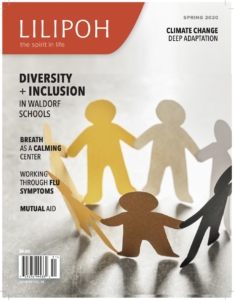Mutual Aid: Solidarity not Charity and Cooperation for the Sake of the Common Good
 During the Covid-19 Outbreak, hundreds of mutual aid networks have sprung up around the US, and the world. The links below will take you to a wealth of interesting information ranging from the kind of activities a mutual aid network can offer, how to start a mutual aid network in your community, the history of mutual aid, and how and why mutual aid differs from top down institutional non-profit organizations and charity.
During the Covid-19 Outbreak, hundreds of mutual aid networks have sprung up around the US, and the world. The links below will take you to a wealth of interesting information ranging from the kind of activities a mutual aid network can offer, how to start a mutual aid network in your community, the history of mutual aid, and how and why mutual aid differs from top down institutional non-profit organizations and charity.
What is mutual aid?
According to Dean Spade, Associate Professor at Seattle University School of Law, and scholar of the mutual aid movement, “Mutual aid is a term to describe people giving each other needed material support, trying to resist the control dynamics, hierarchies and system-affirming, oppressive arrangements of charity and social services.
“Mutual aid projects are a form of political participation in which people take responsibility for caring for one another and changing political conditions, not just through symbolic acts or putting pressure on their representatives in government, but by actually building new social relations that are more survivable. Most mutual aid projects are volunteer-based, with people jumping in to participate because they want to change what is going on right now, not wait to convince corporations or politicians to do the right thing.”
Spade lists some of the ways that mutual aid is different from charity:
- An understanding that it is the system, not the people suffering under it, that creates poverty, crisis, and vulnerability
- Governance/control by people who are most effected (can mean having a membership base of those most effected, or being formed in ways that ensure those providing the aid are from the same group as those giving the aid, or models that allow allies to participate but focus on accountability to those being served)
- Transparency about how they work, any money they use or manage (many mutual aid projects are not funded and are all volunteer run)
- Open meetings and pathways for new people to join and participate
- Political education within the organization to help those working in the project to expand their awareness of experiences that are not their own, to build solidarity, and to make the project supportive and welcoming to marginalized people
- Humility and willingness to accept feedback about how to make the project more useful to the people it serves
- Long-term commitment to provide the aid the project works on
- Connection to and solidarity with other mutual aid projects and other transformative work
- Commitment to dignity and self-determination of people in need or crisis
- Consensus-based decision making rather than majority rule
Source: http://bigdoorbrigade.com/
Mutual Aid 101 Toolkit
Mutual aid is “cooperation for the sake of the common good.” It’s getting people to come together to meet each other’s needs, recognizing that as humans, our survival is dependent on one another.
This toolkit developed by Congresswoman Alexandria Ocasio-Cortez and organizer Mariame Kaba includes step by step instructions for how you can build your own mtual aid network while staying safe from the spread of COVID-19.
If you’re interested in learning more about the long history, politics and practice of mutual aid, there are links to that information in the toolkit.
Big Door Brigade
Big Door Brigade is a group of people based in and near Seattle, Washington offering mutual aid resources for organizers and activists. The website of resources is maintained by Dean Spade.
List of COVID-19 Mutual Aid Networks across the US
https://itsgoingdown.org/c19-mutual-aid/
Covid-19 Mutual Aid UK
Local organizing to support the most vulnerable in our communities
Over 500 mutual aid groups have sprung up through the UK. Here is a link to lots of resources and tools to get started.
